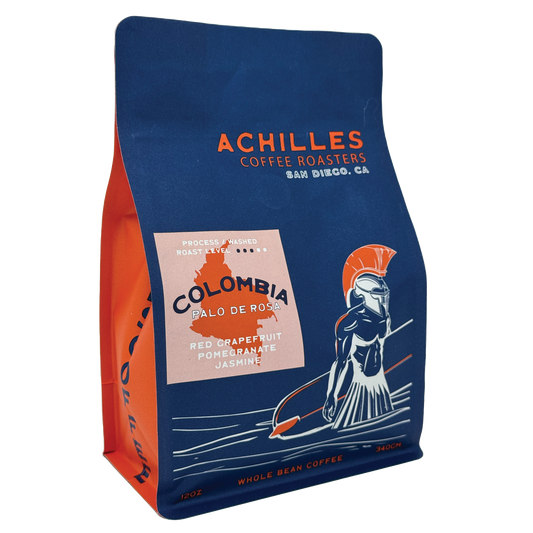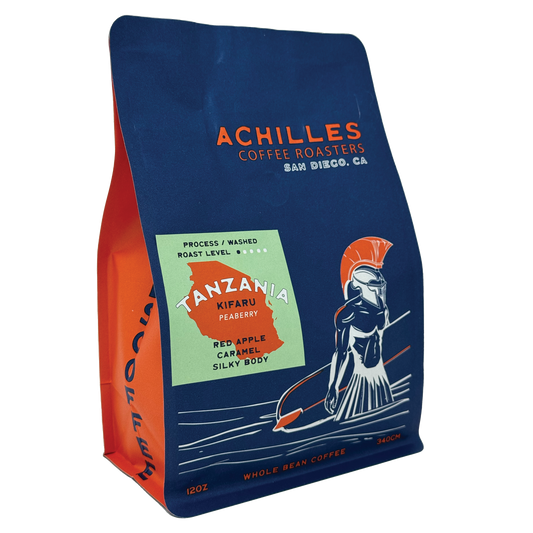When you sip your favorite coffee, you’re tasting more than just the bean—you’re tasting the impact of how that coffee was processed at origin. The post-harvest processing method plays a huge role in determining a coffee’s flavor, body, and aroma.
In this deep-dive guide, we’ll explore:
-
What coffee processing means
-
The key differences between washed, natural, and honey processing
-
How each method shapes your cup
-
How to choose the right process for your taste
Let’s break it down so you can sip with knowledge and confidence.
What Is Coffee Processing?
After coffee cherries are harvested from the farm, they are not immediately ready to be roasted and brewed. The cherries must undergo a critical transformation process that turns them from fresh fruit into green coffee beans suitable for roasting. This essential step is known as coffee processing, and it involves several key stages that dramatically influence the final flavor, aroma, and quality of the coffee.
The processing journey begins with removing the layers of the cherry—the outer skin, the fleshy pulp beneath it, and the sticky mucilage that surrounds the bean inside. Each layer must be carefully separated from the coffee bean to prevent unwanted flavors or fermentation during drying.
Next, the beans need to be dried to an ideal moisture content, usually around 10-12%. Proper drying is crucial to preserving bean quality and preventing mold or spoilage. Depending on the processing method, drying can take place on raised beds, patios, or mechanical dryers, and it often requires frequent turning or monitoring to ensure even drying.
Once dried, the beans are sorted and cleaned to remove defective beans, debris, and any remaining fruit material. This sorting step ensures that only high-quality beans move forward in the supply chain. The cleaned beans are then prepared for export, often hulled to remove the parchment layer that remains after drying.
In short, coffee processing refers to the entire method by which the cherry’s layers are removed and the beans are dried. This step is one of the most important in the coffee production chain because it directly impacts the sensory attributes of the final cup.
Processing affects key coffee qualities such as:
-
Sweetness: How much natural sugar remains to balance acidity and bitterness.
-
Acidity: The brightness or liveliness of the coffee, often perceived as fruity or citrusy notes.
-
Body: The weight and mouthfeel of the coffee, from light and tea-like to rich and syrupy.
-
Clarity of Flavor: How distinct and clean the flavor notes are, without muddiness or off-tastes.
-
Aroma: The bouquet of scents that greet you in the cup, which can range from floral to earthy to fruity.
Different processing methods emphasize these attributes in various ways, making processing one of the most fascinating and influential parts of specialty coffee production. Understanding processing helps you appreciate why coffees from different regions or farms taste so uniquely diverse.
Washed Process (Wet Process)
How it works:
The washed, or wet, process is one of the most traditional and widely used coffee processing methods, prized for producing clean and bright coffee profiles. The process begins by removing the outer skin and pulp of the coffee cherries through a mechanical depulper. This step separates the beans—still covered with a sticky layer called mucilage—from the fruit.
Next, the beans undergo fermentation in large tanks or fermentation vats. During fermentation, natural enzymes and microbes break down the mucilage, loosening this sticky layer from the beans. The fermentation time varies depending on factors like temperature and altitude but generally lasts between 12 to 72 hours. Careful monitoring is necessary to prevent over-fermentation, which can cause off-flavors.
After fermentation, the beans are thoroughly washed with clean water to remove all remaining mucilage. This washing ensures that no residual sugars or pulp remain, resulting in a cleaner final product.
Finally, the beans are dried on raised beds, patios, or mechanical dryers until they reach the ideal moisture level, typically around 10-12%. Drying on raised beds allows for better airflow and reduces the risk of mold or uneven drying.
Flavor profile:
Coffees processed with the washed method are known for their clean and crisp cups. The process tends to accentuate the coffee’s natural acidity, giving bright, lively, and often citrusy or floral notes. The high clarity of flavor means that the unique characteristics of the coffee’s origin and varietal stand out clearly, without muddy or fermented tastes. You might notice tea-like delicacy or subtle fruity hints depending on the bean.
Best for:
This method is ideal for coffee lovers who appreciate delicate, complex, and nuanced flavors. Washed coffees often highlight the terroir, making them favorites among enthusiasts seeking expressive, origin-driven profiles. Countries known for exceptional washed coffees include Kenya (noted for their bright acidity and berry notes), Ethiopia (especially heirloom varietals with floral and citrus profiles), and Guatemala (where Bourbon and Caturra varietals are commonly washed).
Challenges:
The washed process requires significant amounts of clean water, making it less sustainable or difficult to implement in arid regions. It also demands more infrastructure, labor, and monitoring compared to dry processing methods. The need for fermentation tanks, water management, and skilled labor increases production costs and complexity, but these investments often translate to higher-quality and more consistent coffee.
Natural Process (Dry Process)
How it works:
The natural, or dry, process is one of the oldest and simplest coffee processing methods, relying primarily on the sun to dry whole coffee cherries intact. After harvesting, the whole cherries—including the skin, pulp, and mucilage—are spread out in thin layers on drying beds or patios. Because the fruit remains on the bean throughout drying, the sugars and flavors from the cherry flesh gradually transfer into the coffee bean.
During the drying phase, cherries must be regularly turned and raked to ensure even exposure to air and sunlight, preventing mold, fermentation, or spoilage. This can be a time-intensive process, requiring daily attention for several weeks, depending on weather conditions and humidity.
Once the cherries have fully dried to the optimal moisture content (around 10-12%), they are mechanically hulled to remove the dried fruit layers, revealing the green coffee bean inside. These beans are then sorted and prepared for export.
Flavor profile:
Natural processed coffees are celebrated for their bold, fruity, and often intensely sweet flavor profiles. Because the beans dry inside the whole fruit, they tend to absorb more sugars and fruit compounds, resulting in pronounced berry-like, tropical fruit, or winey notes. The body of natural coffees is typically fuller and heavier compared to washed coffees, providing a rich, syrupy mouthfeel.
Acidity is generally lower and smoother, which balances well with the heightened sweetness. Some natural coffees develop a “wild” or funky character that can be intriguing to adventurous coffee drinkers, though this can also lead to off-flavors if not carefully controlled.
Best for:
This processing method is favored by those who enjoy bold, sweet, and fruit-forward coffees with a fuller body. Natural processed coffees from Ethiopia—especially heirloom varietals—are renowned for their bright fruit and floral aromatics. Brazil is another major producer of natural processed coffee, particularly with varietals like Catuai and Bourbon, often yielding nutty, chocolatey, and jammy flavors.
Challenges:
The natural process requires careful management because uneven drying can easily lead to defects, spoilage, or undesirable fermenty flavors. If cherries dry too slowly or inconsistently, the risk of mold or over-fermentation increases, which can negatively impact quality.
Quality control is more difficult compared to washed processing, requiring experienced farmers and processors to monitor conditions closely throughout the drying phase. However, when done right, natural processing produces some of the most unique and sought-after coffees in the specialty world.
Honey Process (Pulped Natural / Semi-Washed)
How it works:
The honey process is a hybrid method that blends aspects of both washed and natural processing. After harvesting, the coffee cherries are depulped, which means the outer skin and pulp are removed, but unlike fully washed coffees, the mucilage—the sticky, sugary layer surrounding the bean—is intentionally left intact during drying. This mucilage contains natural sugars that will influence the flavor as the beans dry.
The beans are then dried with the mucilage still clinging to their surface, either on raised beds or patios. As the mucilage dries, it undergoes color changes similar to honey, ranging from yellow to red to almost black. These color variations correspond to the amount of mucilage left on the beans and the drying time and conditions. For example, “yellow honey” coffees have less mucilage and are dried quickly, while “black honey” coffees retain much more mucilage and are dried slowly, resulting in darker, richer flavors.
This drying stage requires careful management and attention to weather conditions, as the sticky mucilage can promote fermentation if not dried evenly and quickly enough. Producers often turn the beans frequently to ensure even drying and prevent spoilage.
Flavor profile:
Honey processed coffees are known for their sweet, syrupy body, often described as velvety or luscious. They offer a balanced acidity that sits comfortably between the bright, crisp qualities of washed coffees and the fruity intensity of natural processed coffees. This hybrid approach produces a cup that combines the clarity and brightness of washed coffees with the rich, fruity complexity and sweetness typical of natural processing.
The resulting flavors often include honey, caramel, stone fruit, and mild tropical fruit notes, accompanied by a round and satisfying mouthfeel.
Best for:
Honey process coffees are perfect for those who enjoy round, sweet cups with layered complexity. This processing style is especially popular in Central America, with notable producers in Costa Rica, El Salvador, and Nicaragua specializing in honey-processed coffees. These regions’ climates and farming expertise make them ideal for controlling the delicate drying process required to create consistently high-quality honey coffees.
Challenges:
The honey process demands careful, precise drying to prevent over-fermentation or mold, which can easily develop due to the mucilage’s stickiness. Weather plays a critical role—too much humidity or rain during drying increases the risk of defects and undesirable flavors. As a result, producers must be highly attentive during this phase to maintain quality. This sensitivity to drying conditions adds complexity and risk, but when executed well, the honey process yields unique and rewarding flavor profiles not achievable through other methods.
Flavor Summary Table
|
Process |
Body |
Acidity |
Sweetness |
Clarity |
Typical Flavor Notes |
|
Washed |
Light to medium |
High |
Clean, subtle |
Very high |
Citrus, floral, tea-like |
|
Natural |
Full |
Low to medium |
Bold, fruity |
Medium |
Berries, tropical fruit, winey |
|
Honey |
Medium-full |
Medium |
Syrupy, rich |
Medium-high |
Caramel, stone fruit, red fruit |
Which Coffee Process Should You Choose?
Choosing the right coffee processing method ultimately depends on your personal taste preferences and what kind of flavor experience you’re seeking from your coffee. Each process imparts distinct characteristics that influence acidity, sweetness, body, and overall complexity.
If you like clean, crisp, bright coffees → Washed Process
Washed coffees are ideal if you prefer a light, vibrant cup that emphasizes clarity and origin-specific flavors. These coffees often feature floral, citrusy, or tea-like notes with a lively acidity that makes them refreshing and nuanced. Because the fruit is removed early in the process, the final coffee is less influenced by heavy fruity sweetness and more focused on crispness and brightness. Washed coffees are a great choice for those who enjoy precision and clarity in their brew.
If you want fruity, bold, or experimental flavors → Natural Process
If you’re drawn to bold, fruity, and sometimes unconventional or funky flavors, natural processed coffees offer an exciting adventure. The extended contact between the bean and the fruit during drying results in intense berry, tropical fruit, and wine-like notes, often accompanied by a fuller body and lower acidity. Natural coffees can sometimes exhibit “wild” or complex fermentation flavors, which appeal to those who appreciate boldness and uniqueness in their cup. This process is perfect for drinkers who want a more adventurous, fruit-forward coffee experience.
If you prefer sweet, smooth, complex cups → Honey Process
The honey process strikes a balance between washed and natural coffees, making it a favorite for those who enjoy a sweet, syrupy body with balanced acidity and layered complexity. Honey processed coffees showcase the best of both worlds—the clarity and brightness of washed coffees combined with the sweetness and fruity notes of naturals. The range of honey types (yellow, red, black) further allows for exploration within this style, from lighter and cleaner to richer and more intense. This process suits coffee lovers looking for smoothness and sweetness with a nuanced profile.
Pro tip: As you explore coffee, pay attention to how different roasters interpret and highlight these processes. Even within the same processing category, coffees can vary widely depending on factors like region, varietal, altitude, and post-harvest handling. Sampling multiple micro-lots and single origins from various roasters can help you discover subtle (and sometimes dramatic) flavor differences, making your coffee journey richer and more rewarding.
Sustainability & Processing
The choice of coffee processing method has a significant impact on environmental sustainability, particularly concerning water use, energy consumption, and waste management. Understanding these effects is essential as consumers and producers alike seek to reduce coffee’s ecological footprint while maintaining quality.
Water Use:
The washed (wet) process is known for its high water consumption, often requiring hundreds of liters of clean water per kilogram of coffee processed. This demand can put significant strain on local water resources, especially in regions where water is scarce or seasonal. However, many progressive coffee farms and cooperatives are adopting water recycling and treatment systems to mitigate this impact. Technologies like wastewater treatment plants, closed-loop water systems, and dry pulping methods help reduce freshwater use and prevent pollution of nearby waterways.
Natural and Honey Processes:
Natural and honey processes are generally more water-efficient, making them preferable in arid or water-limited regions. Because these methods do not require extensive washing or fermentation tanks filled with water, they help conserve this precious resource. However, the tradeoff is that these methods are often more vulnerable to quality control challenges, such as uneven drying or increased risk of mold, which require careful management and skilled labor to avoid waste and defects.
Energy and Waste:
Processing also involves energy use—especially in drying beans with mechanical dryers or running fermentation equipment. Additionally, the removal of coffee cherry pulp and husks generates organic waste, which if not managed properly, can contribute to environmental degradation. Sustainable farms are increasingly utilizing composting, bio-digesters, and other waste-to-energy solutions to turn byproducts into fertilizer or energy, closing the loop in their production systems.
Eco-Friendly Innovations:
Many coffee producers are investing in eco-friendly fermentation techniques, such as using natural or indigenous microbial cultures instead of chemical additives, and implementing anaerobic fermentation in sealed tanks to reduce water and oxygen usage. Some farms also experiment with dry pulping or mechanical demucilaging, which significantly lowers water needs compared to traditional washed processing.
Summary:
Sustainability in coffee processing is a balancing act between preserving quality and minimizing environmental impact. While washed coffees can offer outstanding clarity and brightness, they require responsible water management. Natural and honey processes provide water savings but call for greater attention to prevent waste. Consumers can support sustainability by choosing coffees from producers committed to eco-friendly practices and transparency in their processing methods.
Brewing Tips for Processed Coffees
Washed Coffees
Washed coffees are prized for their clean, crisp, and bright flavor profiles, making them ideal candidates for brewing methods that highlight clarity and delicate nuances. Pour-over methods such as the V60 or Chemex are excellent choices because they emphasize the coffee’s origin characteristics, allowing the vibrant acidity and floral or citrus notes to shine through without distraction. Use a light roast profile to preserve these subtle flavors and aromatic qualities. Because washed coffees have a clean finish, they’re especially enjoyable when brewed with precise water temperature (around 195–205°F) and a balanced coffee-to-water ratio to avoid overpowering their natural brightness.
Natural Coffees
Natural processed coffees tend to be bolder, fruitier, and heavier-bodied, making them well-suited to immersion brewing methods like French press or AeroPress, which extract the coffee’s deep fruit notes and rich mouthfeel. The longer contact time between coffee and water in immersion brews allows the coffee’s syrupy, berry-like flavors to fully develop. Natural coffees also make a fantastic espresso option—their intense fruitiness creates dynamic and “fruit bomb” shots with lush sweetness and complexity. When brewing espresso with natural coffees, consider dialing in your grind size and yield carefully to balance sweetness and acidity.
Honey Coffees
Honey processed coffees offer a beautiful middle ground between washed and natural styles, combining sweetness with clarity and complexity. This versatility means they perform well across multiple brewing methods, including pour-over, AeroPress, and espresso. For pour-over and AeroPress, use a medium roast to bring out the coffee’s signature caramel-like sweetness and layered fruit notes without masking its bright acidity. When pulled as espresso, honey coffees provide a balanced shot with a syrupy body and rounded finish. Their adaptability makes honey coffees a great choice for home brewers who like to experiment with different methods.
FAQs
Can processing method change the same coffee’s taste?
Absolutely. A washed, natural, and honey process of the same varietal from the same farm will taste very different.
Is one process “better” than the others?
No—just different. It’s all about your flavor preference!
Do naturals always taste fruity?
Most do, but the intensity varies. Some naturals are subtle; some are fruit explosions.
Conclusion: Choose Your Process Adventure
Coffee processing is often an overlooked yet profoundly influential factor that shapes the unique character of every cup you enjoy. It serves as a hidden backbone behind the flavor, aroma, body, and clarity of your brew. When you understand the distinct processing methods—washed, natural, and honey—you unlock the ability to better appreciate the diversity of coffee and how each step impacts your sensory experience.
For example, if you prefer a cup with clean elegance and bright, delicate notes, you might gravitate toward a washed Ethiopian coffee, where meticulous washing and fermentation highlight floral and citrus flavors with crisp clarity. On the other hand, if you’re drawn to intense fruitiness and bold, juicy flavors, a natural processed Yirgacheffe offers a rich berry explosion, full body, and a complex, sometimes wild character that stands out in every sip.
Alternatively, if your palate leans toward smooth sweetness and balanced complexity, a honey-processed Costa Rican coffee could be your ideal match, combining the brightness of washed coffees with the rich, syrupy mouthfeel and subtle fruity undertones imparted by drying the beans with mucilage intact.
By gaining insight into these processing methods, you not only become a more informed coffee drinker but also improve your brewing decisions. Knowing how processing influences flavor allows you to select the best brew method and roast level to highlight your coffee’s unique qualities. This understanding empowers you to elevate your coffee routine, transforming each cup into a thoughtfully crafted experience that aligns perfectly with your taste preferences.








